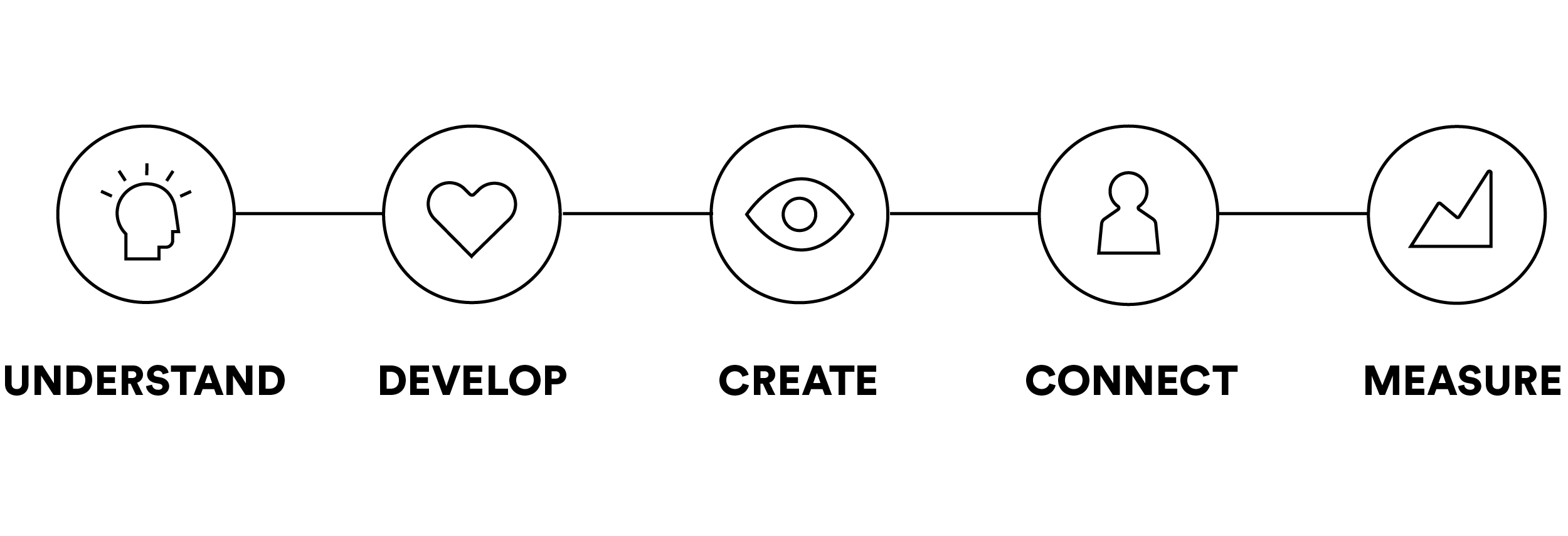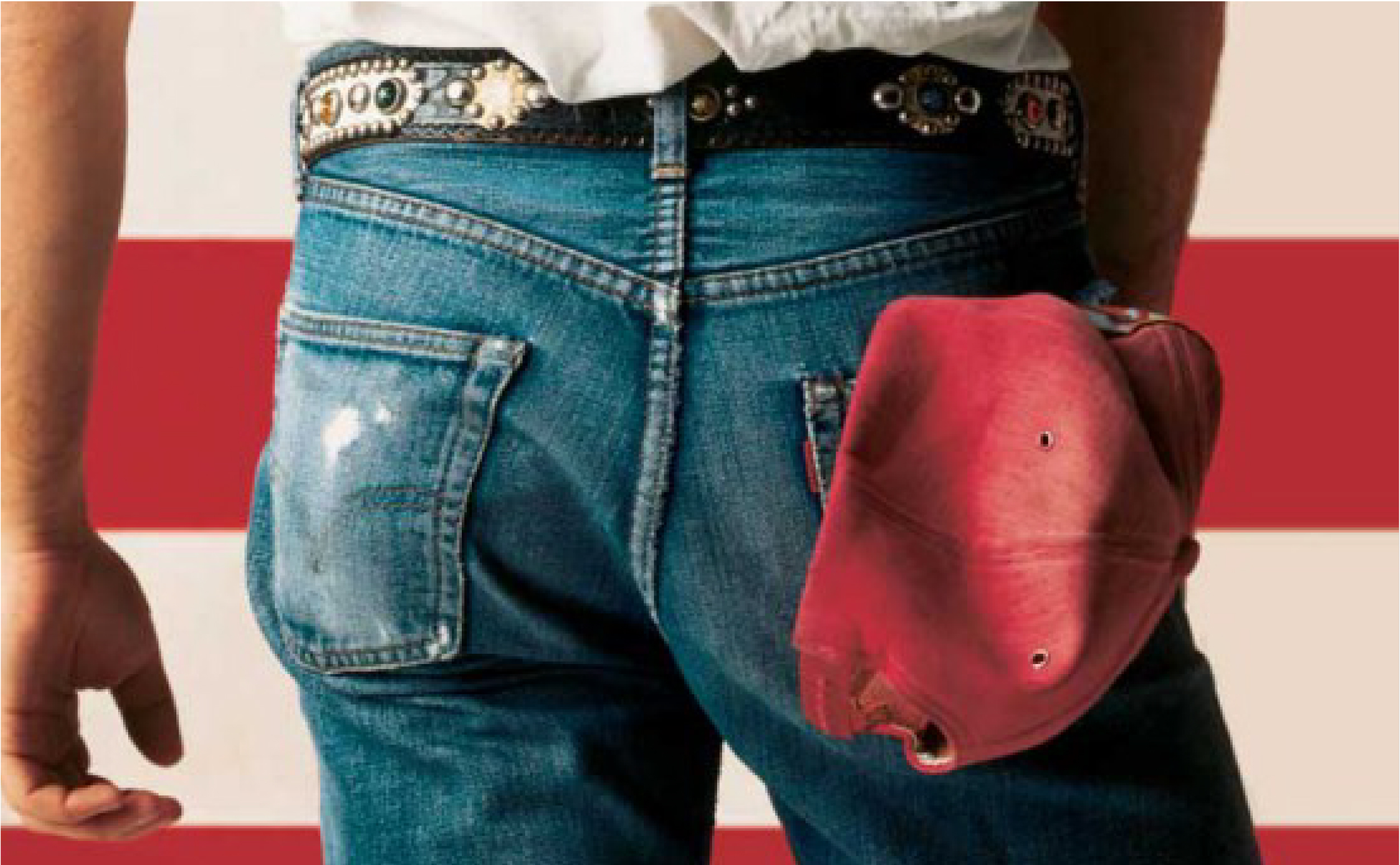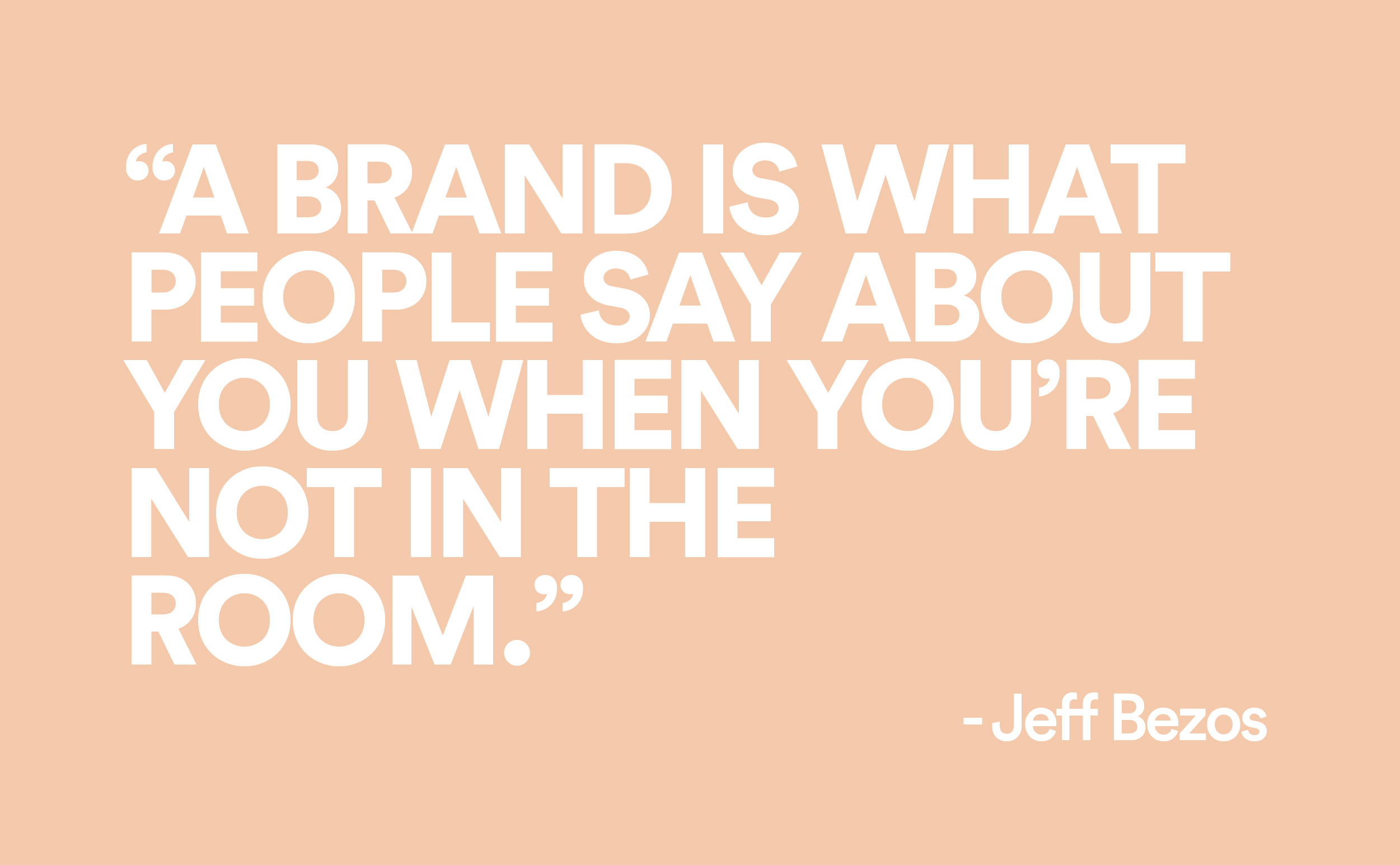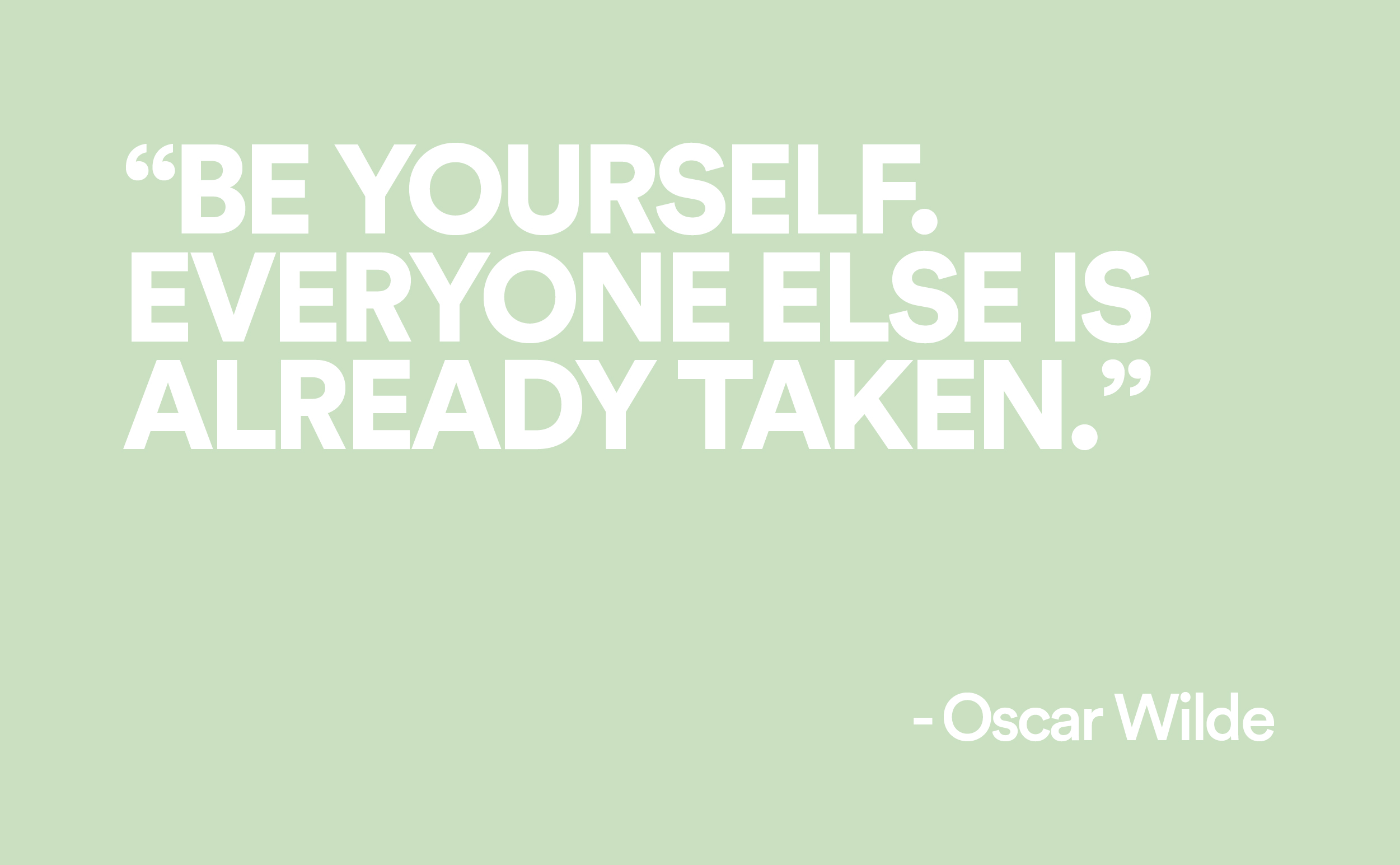BRAND STRATEGY
What do Nike, Airbnb, Red Bull, Netflix, Amazon, Apple, Disney and Levi’s all have in common?
Clear brand strategies and impressive teams behind them with an absolute dedication to bringing their brands to life.
They all know ‘who’ their brands are, ‘why’ they exist (or as we like to call it, their Simple Truth), the values that drive their business forward in a way that helps them nail their brand goals and they’re clear about the mindsets of their customers and know how to delight them. They’ve all been able to embed their brands into the culture of their businesses and whenever they take their brands to market it’s with consistency AND creativity.
While it’s true that not many businesses have the size of marketing spends these brands have to ‘live’ their strategy and deliver them to market, every business, regardless of size, can learn from how seriously these behemoth businesses take their branding. So let’s get back to some basics then explore some topics around why and how brand strategy is done.
When should I start thinking about my brand strategy?
What will a brand strategy deliver to my business?
How can a stronger brand provide my business with a competitive advantage?
What should a great brand strategy include?
The Brands to life® 5 step approach to developing your brand strategy
WHAT IS A BRAND STRATEGY?
What is strategy?
Strategy is a detailed plan that outlines what you’re trying to achieve and how you’re going to achieve it.
What is a brand?
As Jeff Bezos the founder of Amazon describes it… “Your brand is what people say about you when you’re not in the room”. It is how other people feel about your business/product/service. It’s how they would describe you or tell your story to someone else. It’s how they regard you and emotionally connect with you.
A brand is an emotional connection.
“A brand is not marketing, your product, your logo or your name”
A “brand” is those hard-to-pin-down feelings that separate powerhouses from mediocre businesses. Your brand is the holistic reputation of your company. Marketing, is the vehicle that delivers customer-facing messages via different channels, as guided by your branding strategy. Your product or service is the tangible item your customers buy. Your website is part of your marketing strategy. Your logo is how customers connect with you visually. Your name is simply that, your name.
Therefore… what is brand strategy?
Brand strategy is the goal a business sets itself for how they want people to feel about them. It should also include the plan of attack or road map that will be followed to achieve those objectives of connecting with target audiences on an emotional level.
A well-defined and executed brand strategy affects all aspects of a business and is directly connected to a businesses ‘simple truth’, consumer needs, emotions, and competitive environments.
“People can copy what you do but not who you are.” Martin Daley. Virgin
DO I NEED A BRAND STRATEGY?
Competition is fierce. Technology allows consumers to easily compare all of their options. Brands must now compete with not only their competitors but other noise in general just to get their customer’s attention.
Brand strategies are not developed and implemented just so a business can have good looking marketing materials. The reason businesses and organisations spend time and money developing brand strategies is to have a plan in place to work towards achieving the business objectives they set for themselves. These goals could be anything from attracting great staff, better employee and customer engagement, increasing sales, awareness or profitability etc. Better branding is one of the ways to achieve these objectives.
Successful brands, born out of great strategy sit on balance sheets, they have value and help organisations meet business goals. This being the case, the question is less likely to be “Do I need a brand strategy?” and is more likely to be “Can I meet my business objectives without a clearly defined brand strategy?”.
WHEN SHOULD I START THINKING ABOUT MY BRAND STRATEGY?
It’s never too early or too late to plan, set goals and do things better.
I’m a Start-up
Start the way you want to finish. You might not be able to afford a brand strategy agency to begin with but there are plenty of books, podcasts, blogs, vlogs, webinars etc on the subject.
Look at any of the TV shows about start up businesses – Lions Den, Shark Tank etc – they all want to know your story and how you’re going to engage with your target audiences over and above the rational reasons.
I’m a Start-up who is ready to grow up
Often the owners of start-ups carry Brand Strategy around in their heads (whether they know it or not). We talk to many start-up founders who simply don’t have the time to be the ‘brand police’ any longer and need to find a way to document their strategy and embed it within each and every one of their employees… so that understanding the brand strategy and how to articulate it becomes second nature to everyone within the business.
This sometimes happens in advance of a push for venture capital investment, after the venture capital has been secured, or just because it’s time for the leaders of the business to let everyone champion the brand for growth.
I’m an Existing Businesses who has Business Objectives to meet.
If you’re in one of the following situations, defining your brand strategy should be on the table.
You’ve never considered brand strategy as a way to achieve your business objectives
Your brand looks tired, schizophrenic or vanilla.
You’re preparing for growth.
You’re merging multiple business together under a single brand.
Your employees can’t really explain what business you’re in without customers eyes glazing over.
You have no elevator pitch.
Your target market just doesn’t seem to be connecting with you anymore.
You are losing employees to your competitors or your turnover is too high.
New competition is forcing you to adapt.
You have a dodgy reputation that you need to turn around.
You want your business to be seen in a new or different way in the marketplace.
You don’t know how to articulate your key messages in a memorable and interesting way.
WHAT WILL A WELL DEFINED BRAND BRING TO MY BUSINESS?
It will lay the foundation for a healthy and differentiated brand.
It will form an effective brief & sounding board for many aspects of the business (not just marketing).
It will get all stakeholders on the same page to enable them to collaboratively focus on the end goal.
It will objectify something that is otherwise subjective allowing everyone to make faster and better decisions for your brand.
It will provide emotional based reasons (over and above the rational) for people to choose to support your business.
HOW WILL A STRONGER BRAND PROVIDE MY BUSINESS WITH A COMPETITIVE ADVANTAGE?
Emotions help us remember. It’s easier to draw on positive emotional associations with a brand than a list of key selling points
People who are emotionally attached to a brand are more likely to be loyal to it.
Once you have made and emotional connection, there is less selling to do. You will save time and money when you don’t need to introduce yourself from scratch every single time you come in contact with your target audiences.
An emotional connection may get you on a shopping list when you may not have been able to achieve it purely based on rational reasons.
Emotional connections are harder to break.
WHAT SHOULD A GREAT BRAND STRATEGY INCLUDE?
Brand strategy lays the foundation or blueprint for growing your business in a deliberate, considered way and should include the following:
Defined measurable objectives
A Magnetic Customer. An imagined customer and their mindset aspirational enough to set the tone of voice for your brand that will talk to the majority of your audiences.
An authentic ‘Simple Truth’ about your business that you can use as your communications platform.
Your key messaging or proof points to substantiate your ‘Simple Truth’.
The Values you will need to uphold in order to achieve your Simple Truth and business objectives
A defined personality for your brand. How you would like to be described by your target audiences.
An agreement to where you are positioned now and where you want to be positioned in the marketplace. And often a positioning line as the starting point to help get you there.
A documented brand story to act as a manifesto or call to arms for your brand and to set the guidelines for your tone of voice.
A road map to launch and roll out your brand strategy internally and externally over a determined period of time.
Once you’ve agreed to your brand strategy, here’s a tip – make sure it’s documented in a way that can be easily understood and adopted and therefore actionable for everyone within an organisation. There is no point spending time and money developing a fabulous strategy only to have it rot in an in-tray.
While there are brand pyramids, ellipses and onions, Brands to life® prefer to think about brands as people and document brands as people in a Brand Character Profile. Yes people are complicated, but they’re easier to understand than onions.
THE BRANDS TO LIFE® 5 STEP APPROACH TO DEVELOPING YOUR BRAND STRATEGY & TAKING IT TO MARKET.

The Brands to life® approach to breathing life into brands is a process of insightful goal setting that then requires dedication, discipline AND creativity to be brought to life. Steps 1 and 2 focus on brand strategy development, steps 3 and 4 deliver the brand to market and step 5 is about checking to see if the investment in branding is actually working for you.
01 UNDERSTAND THE CURRENT STATE OF PLAY
02 DEVELOP THE CORE OF YOUR BRAND
03 CREATE WITH INSIGHT
04 CONNECT WITH YOUR TARGET AUDIENCES
05 MEASURE THE NEW STATE OF PLAY
Here are some more details about each step of the way and some questions to consider.
01 UNDERSTAND THE CURRENT STATE OF PLAY
Start by understanding the world that your brand lives in or is going to be launched into, and where you want to take it. This stage starts by ensuring you’ve set goals for your business so you’ll be able to measure success down the track. It’s about ensuring you understand your customers and your competitors through research and sometimes a bit of soul searching.
Have you thought about how you would like to be regarded 10 year down the track?
Have you documented shorter term 3 – 5 year measurable objectives for the business?
Have you agreed to your more immediate goals that you think branding will address?
Have you worked out how you are going to judge/measure the success of these goals?
What sort of budget and timelines do you have to allocate to achieving these goals?
What is the current state of your brand/brand strategy/position in the marketplace?
How do your employees currently describe your business/brand?
Who are your external target audiences? And what are their pain points? Do you have any insight about how they currently think about you?
Who are your competitors and how are they currently positioning themselves? Can you learn anything from them? Who in your opinion is doing it best in market nationally or internationally.
02 DEVELOP THE CORE OF YOUR BRAND
This stage is where brand strategy is created. Brand goals and your ‘Simple Truth’ are defined and the core things you will need to start the journey to bring the strategy to life are developed – brand name (if required), brand positioning & brand story.
Brand Strategy
Define your Simple Truth & Brand Character Strategy & Key Messaging & Magnetic Customer
Brand Name
Review your Brand Name if the existing fights with your strategic goals, or create a new one if it’s a new brand.
Brand Positioning
Brand Positioning may be required to quickly establish, or re-establish your business/brand in the marketplace.
Brand Tone of Voice
Brand Story & Tone of Voice. Develop short paragraph to act as a manifesto for your brand. This will become the first verbal articulation to set the tone of voice for the brand and content moving into the creative stage.
Audit Existing Brand Touchpoints
Undertake a Touchpoint Audit. If your brand already has a number of Touchpoints, review them against the newly defined Brand Strategy. This will quickly reveal what is already aligned and working or what needs updating to reflect the new brand strategy. If the audit reveals that what you thought was your best Touchpoint doesn’t even come close to helping you tell your story – it’s time to look at a new visual language and potentially your existing brand mark to see how a revolution or an evolution will help you achieve the goals you’ve set for the brand. Remember there are internal as well as external Touchpoints to consider.
Develop your Brand Roll-out Road-Map.
Brand Road-map. This is the planning for how to embed the brand within your organisation and then how you’re going to take it to market externally. Internally it could mean a full review of processes, systems, employment policies and operations and how they stack up against the new brand strategy. At the very least it will mean the plan to introduce the new brand internally and have everyone understand why any change was made and what it means for them moving forward. The external Road Map is informed by looking at the budget you have and planning how it will be used most effectively to connect your new brand with your target audiences. It includes determining what Touchpoints need updating and in what order based on customer experience. It’s social media strategy development and media planning for those brands who have budgets allocated to launch campaigns. All the planning required before creative gets underway.
03 CREATE WITH INSIGHT
With the strategy and core brand elements established, we progress to creative development. It’s the combination of the sharp strategic thinking and the creative articulation of it that is key to effectively telling the story of your brand and establishing the emotional connection you are seeking with your audiences.
Brand Mark & Visual Identity/Language Concepts.
We typically create two concepts demonstrating how visual language can articulate your new brand strategy. With a single visual concept agreed to, you can begin the process of going back to your touchpoint list and deciding what touchpoints in what order of priority need updating as per the newly approved look and feel based on budgets and timelines.
Touchpoint Roll-out.
Now we’re able to begin applying the new branding to all internal and external touchpoints to take the new strategy to market.
04 CONNECT WITH YOUR TARGET AUDIENCES
While this is stage 4, you can star to road-map how to connect your brand with target audiences Tackle how you are going to convince everyone within your business/organisation first about why you’re reviewing the brand, what the vision is and give them the tools to easily understand and articulate it.
Create fans within your own organisation.
Leadership team first from the CEO down, then they help teach everyone else to understand the brand. Launches, Roadshows, Parties, Video Intros, even the classic goodie bag. Employees are looking for leadership, clarity and goals – you can hand it to them on an exciting platter.
Plan how you are going to take your story to market. Roadmap the rollout of the brand to market. Obviously, this depends on the budgets you have as to what form this might take shape. PR, Media Planning & Creative Communications/Advertising, Content and SEO planning, Search Engine Marketing, Promotions, Events, Guerrilla Marketing/Stunts. If we circle right back to the start of this article, we recognise not everyone has Coca Cola budgets but it’s not rocket science that promotion and connection with the right audiences, in the right ways is always going to be more effective that doing nothing at all. Invest what you can, measure, adjust.
05 MEASURE THE NEW STATE OF PLAY
Which brings us to the final step of successful brand (and business) strategy which is to ensure you are consistently reviewing results against your established measurable objectives.
Circle back to the first step and see (after a pre-determined time) what’s changed?
Is the state of play from a market/competitors/audience POV still all the same?
Are your brand objectives and your business objectives being achieved? Ie turnover, profitability, staff retention, customer base etc?
If they are, can we pinpoint if anything specifically has been driving this and do more of it? What can be done to improve positive results even further?
If objectives are not being met, why not? Has the marketplace changes? Is the brand not resonating or is it just not getting enough exposure? What needs to change to achieve the goals initially set or do expectations need to be adjusted?
The Brands to life® approach to brand strategy
Because we believe in humanising brands, our Brand Strategy process is based in understanding ‘who’ your brand is and who your Magnetic Customer is. Everything else we create is dropping a drawbridge to connect the two.
We breathe new life into brands. We do this by uncovering a brand’s true character and create a brand strategy to express its unique personality. We dig deep and tap into a brand’s inner truth, then we train your brand to be more sociable, more personable, more connected. We make brands so irresistible they can’t help but connect with more customers.


